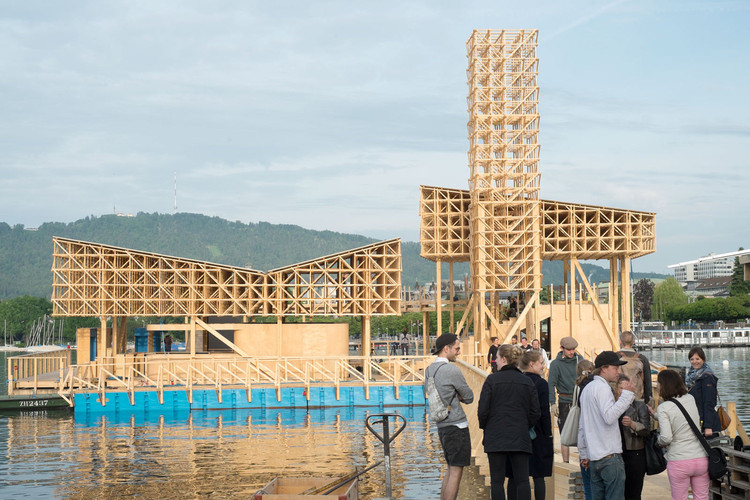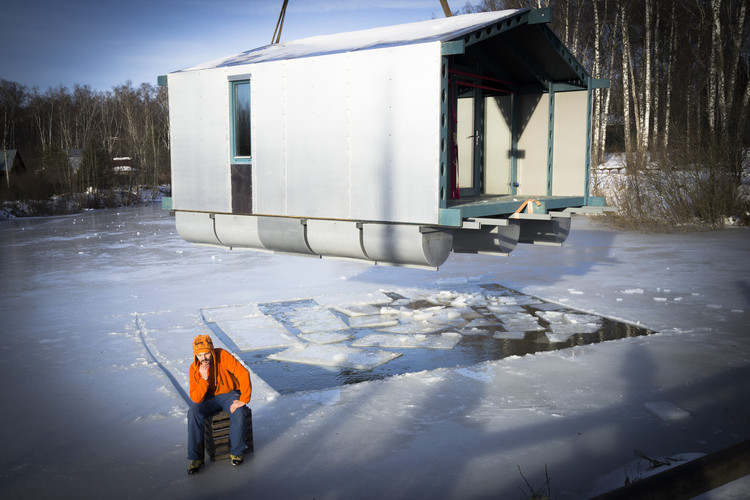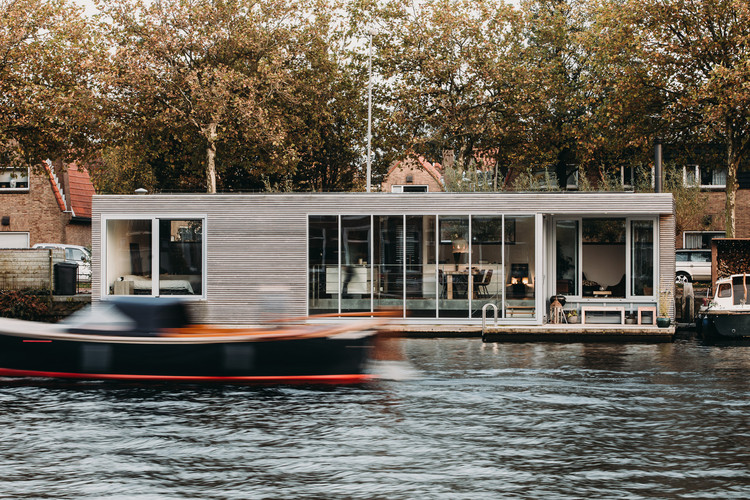
The aquatic environment has always fascinated dreamers and researchers. Around 1960, in the midst of the fierce space race of the Cold War, French explorer Jacques Cousteau developed equipment such as the Aqualung to unravel the depths of the sea, which remained as unexplored as outer space itself. He even stated that in 10 years we could occupy the seabed as “aquanauts” or “oceanautas,” where it would be possible to spend long periods extracting mineral resources and even growing food. Sixty years later, the seabed is still reserved for few, and mankind has been more concerned with plastic in the oceans and rising sea levels than colonizing the ocean floor. But being close to a body of water continues to attract most people. Whether out of interest or in response to risks of flooding and over-population, some have turned to utopian proposals and floating architecture, examples of which have been featured in the ArchDaily project archive. But what are the fundamental differences between building houses on land versus on water, and how do these buildings remain on the surface rather than sinking?

From Archigram to the Japanese Metabolists, architects have also spent a lot of time wondering what water occupation would look like. Proposals from the 60s by architects ranging from Kenzo Tange to Buckminster Fuller—many of which were centered in Japan—imagined an urban fabric that unfolded floating on water, combating the lack of space and the high costs of urban land in the city of Tokyo. Although these utopian proposals have remained on the drawing boards, examples abound of structures and even floating communities in history. The floating islands of the Ma'dan people in the humid areas of southern Iraq, for example, date back to more than six thousand years old. In Peru, there are artificial islands in Lake Titicaca with fixed buildings and residents, built mainly of totora—a common plant in the region—that is also used to make boats and other constructions. If we talk about water occupation, it is also impossible not to mention The Netherlands, where much of the territory is below sea level and buildings, dikes, and windmills on the water are ubiquitous.

With rising sea levels from global warming, the total water surface area of planet Earth is expected to increase dramatically in the coming years. The United Nations (UN) estimates that, by 2100, the sea level will rise between 26 to 82 centimeters worldwide. Kiribati, an idyllic archipelago in the middle of the Pacific Ocean, will be the first country to disappear completely due to the rise in sea level—there are researchers who estimate that this will happen within 10 to 15 years, and plans to relocate its population are already underway. As much as there are opposing political currents that deny that humanity could cause planetary changes, the United Nations has supported research on floating cities for housing so-called climate refugees. A speculative proposal, Oceanix City, was developed by Bjarke Ingels Group as a resilient and sustainable floating community, designed to accommodate 10,000 people to grow, transform and adapt organically over time.

But more common than islands and floating cities are independent buildings that remain on the water, without a foundation directly connected to the ground. In the canals of London, Vancouver, Boston, and other cities, it is common to find boat houses, some anchored for a long time, and others that can navigate and settle elsewhere.

Older floating houses were built on big trunks of floating wood. Following this precedent, a very common form of floating construction uses large plastic vats placed under the construction platform. This is how the NLÉ Architects Floating School in Makoko, for example, was built, as a prototype to improve the architecture and urbanism of coastal cities in Africa by creating floating houses, community centers, and playgrounds. Unfortunately the building ended up collapsing after 3 years.


The Floating Piers, one of Christo's last works, developed for the Venice Art Biennial in 2016, allowed visitors to Lake Iseo, Italy, to "walk on water." Built with 100 thousand square meters of bright yellow fabric, supported by a floating modular system composed of 200 thousand high density polyethylene cubes, the installation undulated with the movement of the lake. Using floats or shallow draft boats (like the hull of a catamaran) to support a continuous deck is a way of supporting the building all over the water surface. In this case, the buoyancy of the supports limits the maximum load that they can support.

Another type of floating construction occurs through the use of concrete floats. There are two ways of adapting this method. The first is to insert large empty spaces in the concrete structure. Expanded polystyrene is widely used for this method.

The other option is that the concrete float ends up floating because it is displacing water. Like a ship, a concrete hull can sink to a calculated point. Obviously, the concrete must be very well constructed to avoid any cracks that may allow water to pass. The great advantage is that much of this submerged space can be used. Just like a bowl in water, it is possible to add weight until its edges are very close to the surface without water actually entering. For this reason, it is important to predict a good weight distribution and study all the loads that will compose the building. In the Watervilla project by + 31ARCHITECTS, one floor is practically submerged.

There are also so-called amphibious architectures, which could be useful for areas that face periodic flooding. After the flood triggered by Hurricane Katrina in New Orleans, the architects of Morphosis Architects developed a prototype of a residence that was built to withstand a flood. It is an apparently ordinary house, but attached to flexible bollards and resting on concrete foundations. If the water level rises, it can move up and float. Attachments to mooring posts limit the movement caused by water. A base, also called a "chassis," integrates all mechanical, electrical, hydraulic, and sustainable systems, and floats safely in case of a flood. Amphibious structures are not static; they respond to floods like ships at a rising tide, floating on the water's surface.

Buildings of this type will always demand special solutions, especially for energy, drinking water, and sewage. Many of these facilities require self-sufficiency. When there is a permanent connection to the ground, it must be flexible so that everything can keep up with the changes in height.

Putting our chips into developing such solutions without changing the world's mentality toward fossil fuels, the aggressive extraction of natural resources, and the enormous production of waste would be tremendously nonsensical. But the occupation of water surfaces could provide incredible opportunities that we cannot even foresee today. Whether we will all have to live in the water or not, it is too early to say. But learning to swim is always a good idea.
Editor's Note: This article was originally published on January 11, 2021.




















